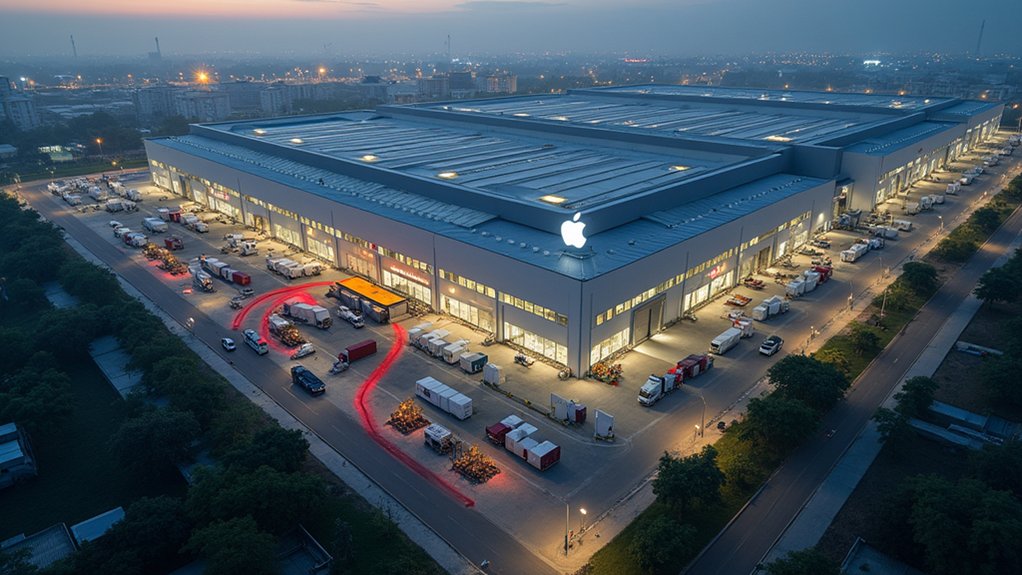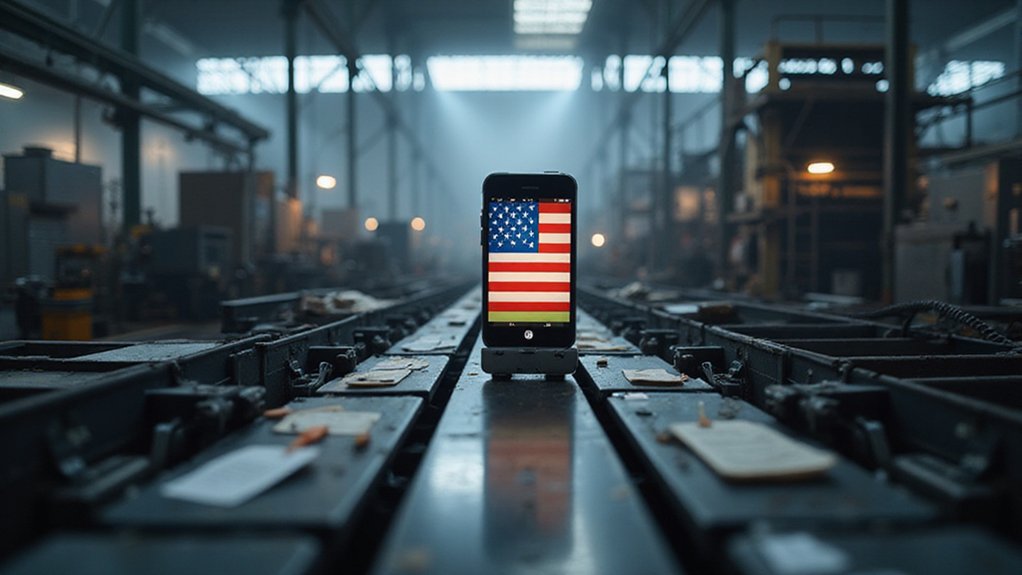Apple plans to produce all 60 million iPhones for U.S. customers in India by 2026. This shift represents the company’s biggest manufacturing change since iPhone production began in China in 2007. The move is driven by U.S. tariffs on Chinese imports and India’s favorable manufacturing incentives. China has tried to slow this exodus by blocking equipment shipments. This massive alteration faces challenges as nearly 200 key Apple suppliers still remain in China.
As global trade tensions rise between the U.S. and China, Apple is dramatically shifting its manufacturing operations to India. The tech giant plans to make all 60 million iPhones sold annually to U.S. customers in India by 2026. This move will double Apple’s current manufacturing output in India, where it first began assembly in 2017.
The U.S. market represents 28% of Apple’s global iPhone shipments, making this shift significant. New facilities like Foxconn’s plant in Bengaluru are key to meeting these targets. India’s growing role in Apple’s supply chain is evident from the $17.4 billion worth of iPhones exported from the country in the last fiscal year. This manufacturing shift mirrors China’s own renewable energy dominance in global markets, with both trends reshaping international trade patterns.
High U.S. tariffs on Chinese imports—reaching up to 145%—are a major factor driving this exodus. India faces only a 10% tariff currently. The ongoing U.S.-China trade war has pushed Apple to reduce its dependence on China-based manufacturing. India’s “Make in India” initiative and $2.7 billion in manufacturing incentives have also attracted Apple’s attention. Despite these advantages, India could face a 26 percent tariff after a 90-day grace period expires.
Punitive U.S. tariffs on Chinese goods have accelerated Apple’s manufacturing exodus to India, where favorable policies sweeten the deal.
The change isn’t simple. Nearly 200 key Apple suppliers remain in China, and Chinese officials have blocked equipment shipments needed for iPhone production in India. A Chinese supplier was even forced to create a front company in Southeast Asia to bypass these export restrictions. Experts say moving just 10% of Apple’s production out of China could take up to eight years. Growing India-China tensions further complicate matters.
For China, this represents Apple’s biggest manufacturing shift since iPhone production began there in 2007. The Chinese government is trying to slow the exodus by blocking supplier shipments to India. The move threatens China’s position as Apple’s main production hub.
India’s electronics export sector is booming, with Foxconn’s new plant expected to produce 20 million units annually when fully operational. Tata Electronics is expanding as a key manufacturing partner in India.
For Apple, this diversification reduces its vulnerability to U.S.-China tensions, as demonstrated when it airlifted $2 billion worth of iPhones from India to the U.S. in March.
References
- https://www.engadget.com/mobile/smartphones/apple-may-shift-all-us-bound-iphone-production-from-china-to-india-133049630.html
- https://timesofindia.indiatimes.com/technology/tech-news/how-china-is-trying-to-stop-apples-big-iphone-move-to-india/articleshow/120617573.cms
- https://www.cnbctv18.com/technology/apple-may-shift-all-us-iphone-production-to-india-by-2026-19594287.htm
- https://www.theinformation.com/articles/apples-india-manufacturing-push-faces-spoilers-including-china
- https://markets.businessinsider.com/news/stocks/apple-s-aapl-iphone-shift-to-india-hits-major-roadblocks-amid-china-tensions-1034622782









